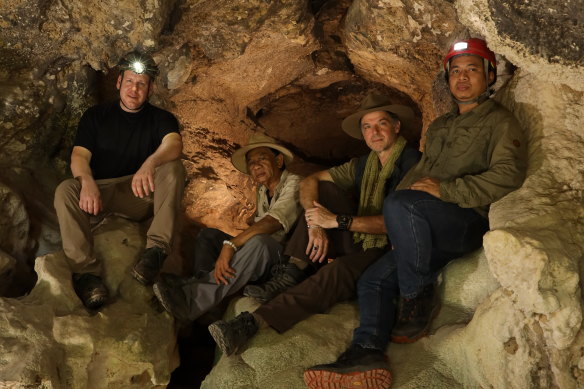
Australian archaeologists have uncovered humanity’s oldest-known rock art, and the prehistoric tableau of a warty pig and three stick figures may also be the earliest-ever depiction of a story.
The scientists used a new dating method to analyse knots of calcium carbonate that have solidified over the painting within a limestone cave on the Indonesian island of Sulawesi. The art they discovered is at least 51,200 years old.
“The painting is a narrative composition, a composed scene, depicting three human-like figures interacting with a pig, so it’s the earliest evidence identified for the use of storytelling in art,” said Adam Brumm, a professor of archaeology at Griffith University and co-author of the Nature paper reporting the findings.
The same research team challenged Europe as the custodian of the world’s oldest cave art in 2014 by revealing paintings in the Sulawesi caves were at least 40,000 years old, rivalling the antiquity of charcoal drawings in Spain and France.
Now they’re sure this cave painting is by far the oldest art ever discovered. It’s about triple the age of Australia’s earliest cave painting, a 17,300-year-old red ochre kangaroo in the Kimberley.
Another significant Sulawesi cave painting the researchers analysed depicts a gang of “therianthropes”, which are figures that combine features of animals and humans.

Members of the research team (left to right) Maxime Aubert, Budianto Hakim, Adam Brumm and Adhi Agus Oktaviana.Credit: Ratno Sardi
At least 48,000 years ago, ancient artists drew these humans and added what appear to be beaks and tails – leaving behind some of the oldest evidence of creativity.
“Archaeologists are very interested in depictions of therianthropes because it provides evidence for the ability to imagine the existence of a supernatural being, something that does not exist in real life,” Brumm said.



























